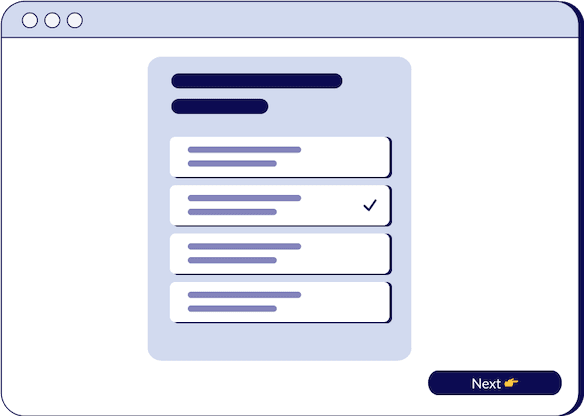
Goal Setting with Clients
Matt Doyon
Chief Executive Officer @ Triple Session

- duration
- 18 min
- Average Score
- 62%
- Stars
- 5
Have you ever wondered how setting clear and measurable goals could transform your sales approach? In the competitive world of sales, understanding your client's objectives is critical. According to recent statistics, sales professionals who actively engage in goal-setting with clients achieve a 42% higher win rate compared to those who don't. In this session, we'll delve into the intricacies of setting SMART goals with clients and explore a six-step methodology that can elevate your sales game.
Defining Business Goals: A SMART Perspective
In the first part of the session, the speaker emphasizes the importance of understanding business goals. Business goals, defined as broad and measurable outcomes, play a pivotal role in guiding companies, teams, or individuals towards success. The SMART Goal methodology, focusing on Specific, Measurable, Attainable, Relevant, and Time-bound objectives, is introduced as a proven approach. This method not only provides a structured framework but also establishes credibility, showcasing you as a professional adept in goal-setting methodologies.
The Benefits of Working with SMART Goals
When clients already have predefined goals, the benefits are substantial. Objectifying conversations, aligning strategies, and conveying professionalism are just a few advantages. As a sales representative, adopting the language of your clients during goal-setting establishes trust and credibility. It positions you as a trusted advisor working collaboratively towards shared objectives.
Guiding Clients Without Predefined Goals: The Six-Step Methodology
Step 1: Educate Your Clients on SMART Goals
The journey begins by educating clients on the SMART Goal methodology. As the saying goes, "Teach me, and I forget; tell me, and I might remember; involve me, and I learn." Getting clients actively involved in the goal-setting process builds a foundation for collaboration and understanding.
Step 2: Define Value Measures
In the second step, the focus shifts to defining value measures. These measures are the building blocks of quantifiable business outcomes. Understanding both user and business measures is essential for identifying success metrics, creating a solid foundation for goal-setting.
Step 3: Define Business and User KPIs
Metrics provide context to measures, and defining Key Performance Indicators (KPIs) is crucial. This step involves understanding the user and business metrics, aligning them with measurable performance, and establishing success criteria that resonate with the client's objectives.
Step 4: Understand the Starting Point
Knowing the client's current status is paramount. Analyzing trends in measures and KPIs helps in understanding whether the client is on a growth trajectory, facing a downturn, or operating at a stable level. This insight forms the basis for setting realistic and achievable goals.
Step 5: Define the Objective, Timeline, and Minimum Success Threshold
This step involves planting the flag on what the client aims to accomplish. Defining the objective, establishing a timeline, and setting a minimum success threshold provide clarity on the expectations and outcomes of the goal-setting process.
Step 6: Define Deliverables and Non-controllables
Finally, the process concludes by defining deliverables and non-controllables. This step involves outlining responsibilities, external inputs, internal contributions, and factors beyond control that might influence outcomes. It ensures a comprehensive understanding of the collaborative effort required for goal attainment.
Applying the Methodology: A Case Study on Accounts Payable
To illustrate the six-step methodology, let's consider a scenario involving an accounts payable platform. The goal is to expedite the collection of receivables, a common objective in sales. Through each step, from educating the client on SMART Goals to defining deliverables, the session guides sales reps on seamlessly integrating this methodology into their interactions.
In conclusion, mastering the art of setting SMART goals with clients can be a game-changer for sales reps. By adopting a structured and client-centric approach, sales professionals not only enhance their win rates but also establish themselves as trusted advisors in the eyes of clients. As you embark on your next client interaction, remember to watch this session to gain deeper insights into the SMART goal-setting methodology and unleash your full sales potential.
How Triple Session works
Training, Testing, & Feedback
Triple Session's proven formula accelerates your sales performance through consistent, organized practice, backed by measurable results.

Bite-Sized Knowledge
Our expert-led video sessions simplify complex sales concepts into easy-to-digest 5-15 minute videos for better retention.

Test Your Understanding
After each session, there will be a quiz to test your understanding and help you improve on any areas that need more attention.

Evaluate and Grow
Get progress snapshots after each quiz to track your improvements and achieve your sales mastery goals.